
Let’s be honest, how often have you planted a flower because it was useful? How often have you wandered through a greenhouse full of color and scent from the gorgeous flowers inside and thought, “Hmm, I’ll bet that one over there would be a useful addition to our yard, honey.”
Probably never.
Let’s face it; flowers are almost always an emotional purchase.
Sure, we may head to the greenhouse with the specific intent to buy flowers, but we choose the ones we do because they’re pretty. We think, “Hey, will you look at that shade of purple. Those pansies look like they have stars on them. I love it!” And into our shopping cart they go.
Of course, as long as you can give them the appropriate sun and soil, there’s nothing wrong with picking out flowers this way.
But, there’s absolutely no reason why the beautiful flowers you add to your home landscape can’t do double duty. There are so many lovely flowers that are useful too.
- You can eat them.
- You can drink them.
- They will keep mosquitoes away from your patio.
- You can make them into folk medicine.
- You can put them on your face or in your hair.
- They will keep deer away.
- They will prevent garden pests from finding your precious veggies.
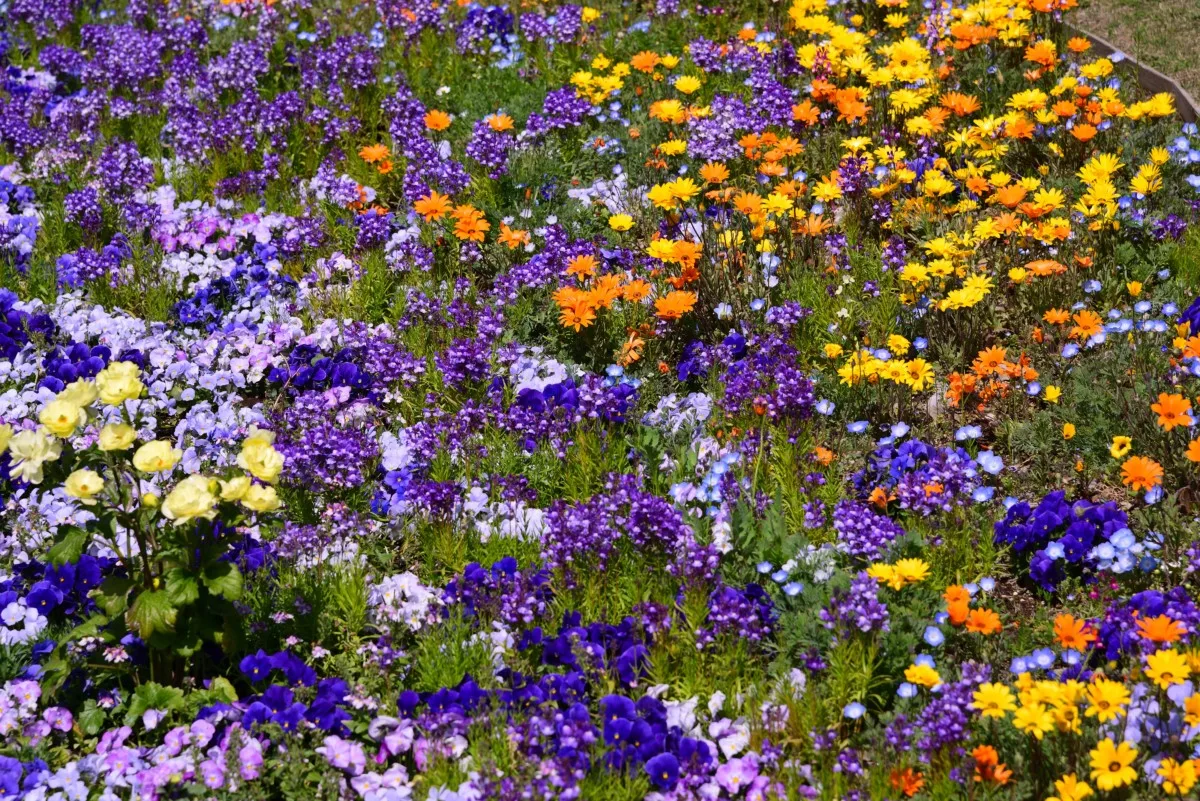
And let’s not forget, having flowers in your yard provides food for your local pollinators – bees, moths, bats, hummingbirds, butterflies, etc.
Of course, before you ingest a plant for medicinal purposes, you should always discuss it with a medical professional first. I am by no means a doctor (nor do I play one on TV); I’m simply pointing out the medicinal qualities of certain plants for entertainment and educational purposes. Please, do your due diligence before using plants to treat a medical condition.
Now that we’ve got that out of the way, let’s look at some hard-working flowers that are more than just a pretty face.
1. Anise Hyssop (Agastache foeniculum)
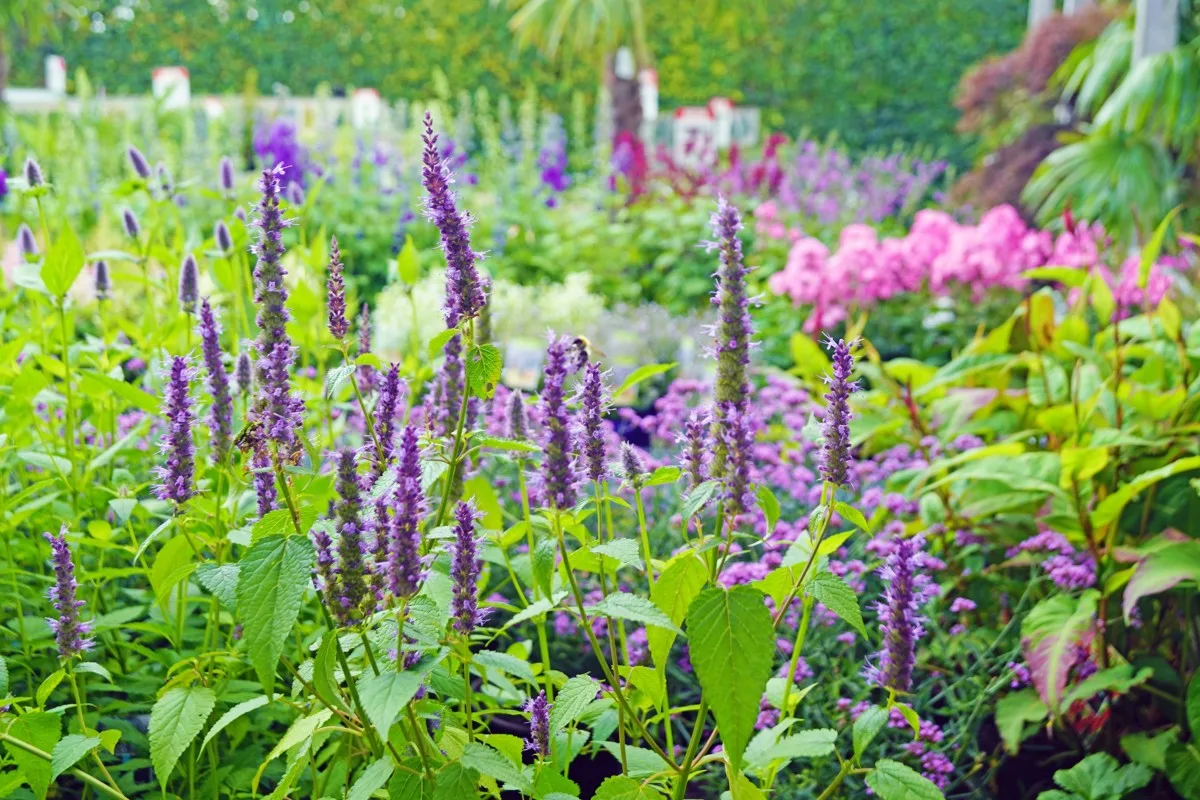
You may be surprised to learn that anise hyssop is an imposter. Yup, it’s neither anise nor hyssop. It is, in fact, a member of the mint family. It still has a lovely licorice flavor and scent (hence the name), which lends this beautiful flower for cooking and baking. You can save the leaves and seeds and use them in place of actual anise, chervil, tarragon and fennel.
Certain Native American tribes have brewed anise hyssop tea to help ease depression. As a tea, anise hyssop also helps relieve chest congestion from colds.
Sun, Soil, and Water:
This perennial prefers full sun in sandy or loamy soil that drains quickly. It doesn’t do well in soil with a lot of clay or soil that stays damp for too long. The plant is quite drought-resistant. Hardiness zones: 3-8, grows native in some areas of North America.
2. Bee Balm (Monarda)
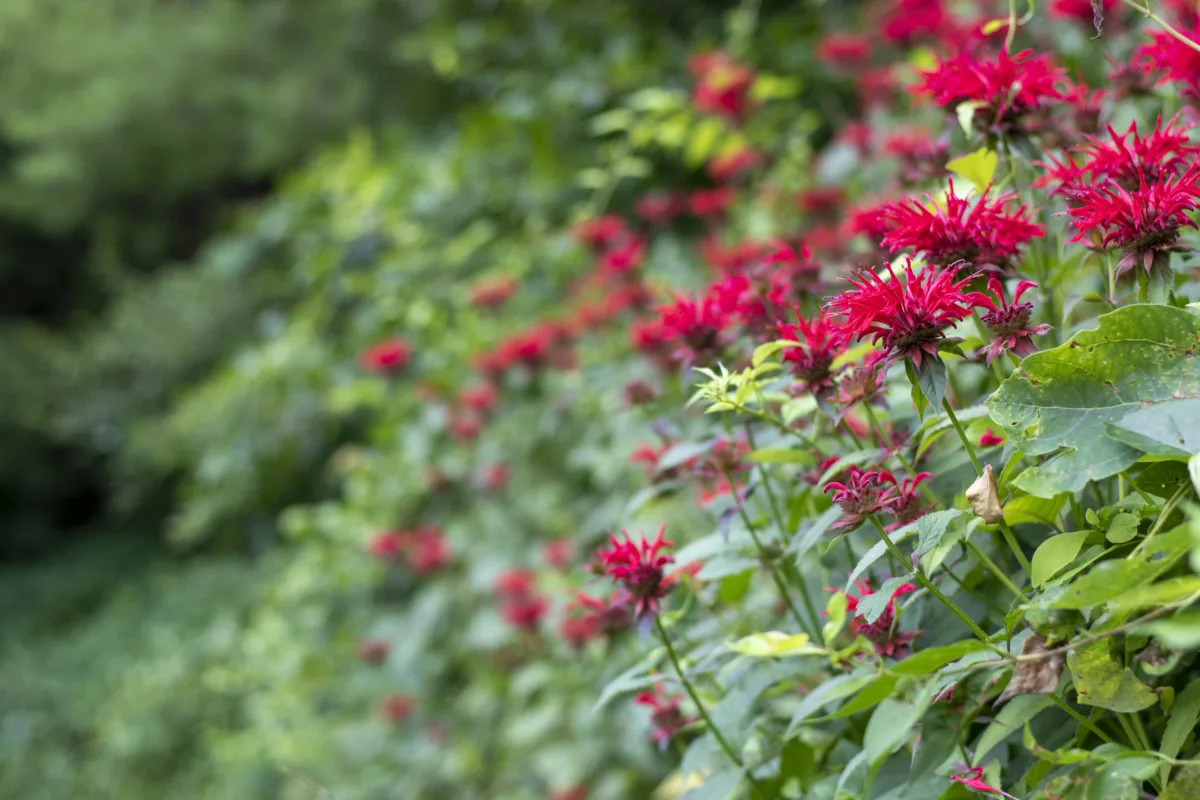
These lovely flowers resemble a daisy with a bad hair day, and if you plant them, you’ll make a lot of pollinators happy. However, the local mosquito population won’t be thrilled. Bee balm has a particularly strong scent reminiscent of the bergamot orange (hence bee balm’s nickname of bergamot), which mosquitoes don’t like. Consider planting bee balm around areas where you enjoy spending time outdoors to help keep those pesky skeeters away.
But this hard-working flower doesn’t stop there. You can eat the leaves and flowers. Add the petals to salads for a pop of color. Or make yourself a cup of black tea and add a few bee balm leaves to replace the classic Earl Grey.
Bee balm is a popular medicinal plant used to alleviate nausea, menstrual cramps and even help you sleep.
Sun, Soil, and Water:
You can expect flowers the second year after planting this hardy perennial. Bee balm does best in full sun but does best with a little shade if you have particularly hot summers. Plant it in rich, loamy soil that holds water well. It may help to mulch around the base of your plant to keep the soil moist. Hardiness zones: 3-9, growing native in many areas of North America.
3. Borage (Borago officinalis)
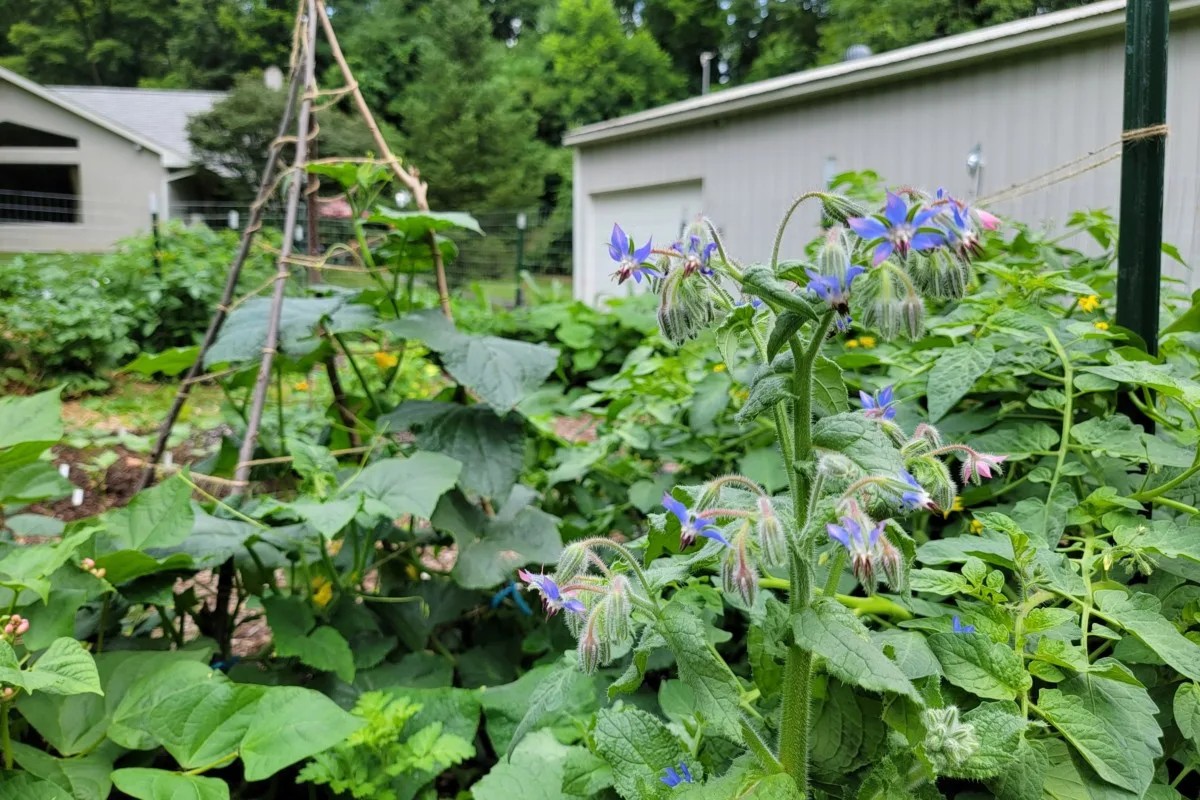
Borage sports beautiful blue flowers that pop against their background of green. This lovely herbal flower is incredibly easy to grow from seed too.
If you’re a tomato grower, you’ll want to add some borage to your garden this year, as borage helps to keep tomato hornworms away. It repels cabbage moth caterpillars too. You can even make a fertilizing tea with borage to add potassium to the soil.
And those lovely blue flowers are pretty tasty in salads, with their fresh flavor reminiscent of cucumber. Add a few flowers to your glass of water for a refreshing thirst quencher.
Medicinally, borage is well known for treating depression. When you’re feeling down, try a soothing cup of borage tea.
Sun, Soil, and Water:
Borage isn’t a picky plant and will generally do well no matter where you plant it. It does just fine in full sun and partial shade, and the plant is pretty drought-resistant. Hardiness zones: 2-11.
4. Calendula (Calendula officinalis)
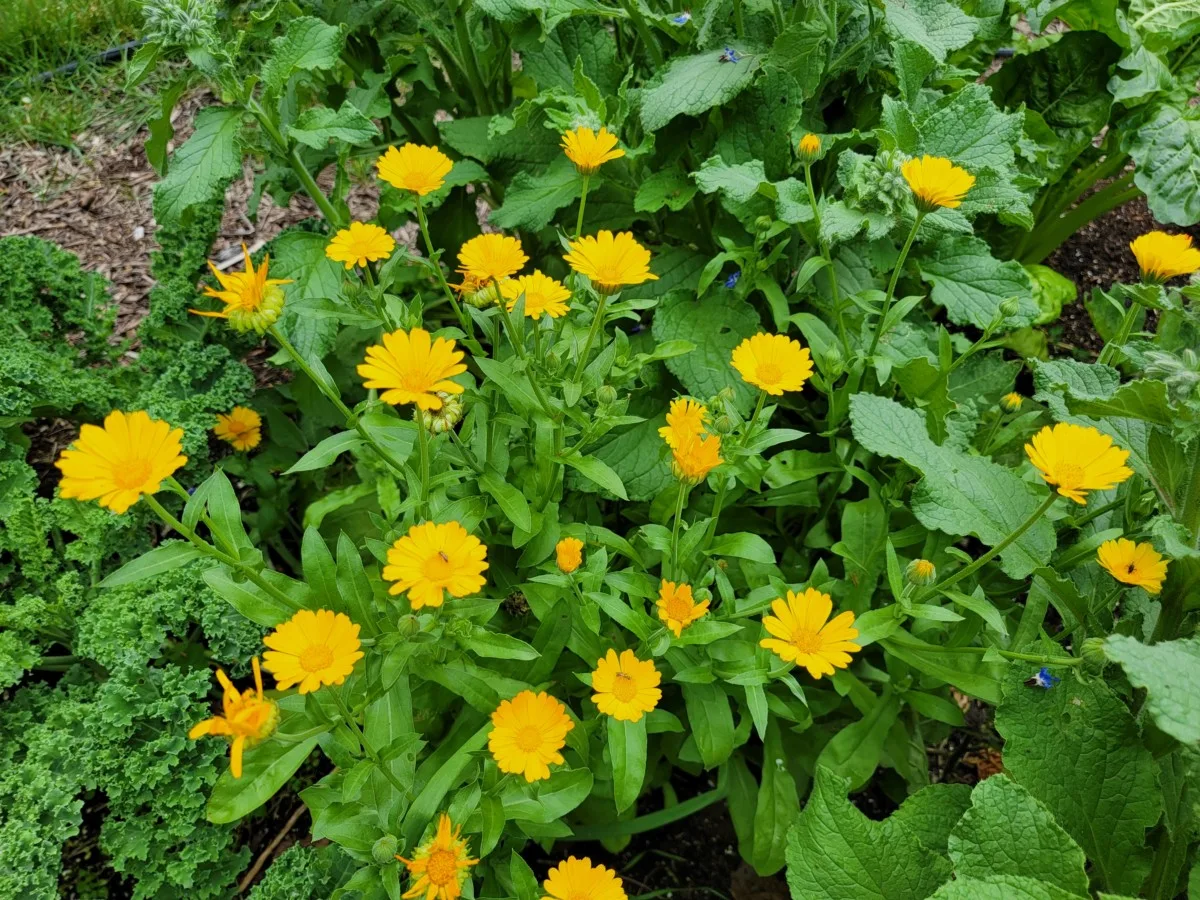
Calendula, or pot marigold, is a cheery flower with blooms that range from pale orange to a deep brick red. And if you love natural skincare, you’ll want to grow calendula. The flower is used in all kinds of tonics, toners, moisturizers and salves as it is incredibly nourishing and gentle on your skin. Calendula is anti-inflammatory, antifungal and antibacterial. It’s used to help treat wounds and soothe irritated skin.
Check out Deanna’s great recipe for Calendula Salve.
Beyond your skin, calendula can be grown in the garden as a trap crop for aphids and as a companion plant to repel whiteflies. If you’re having pollination trouble, plant calendula near your zucchini, tomatoes and ground cherries to attract more pollinators.
Sun, Soil, and Water:
It almost seems unwarranted to give you this information as calendula is easy to grow and isn’t the least bit fussy about where you poke it in the ground. It’s one plant that seems to thrive on neglect and less than stellar nutrients. Short of full shade, pick any spot in your yard, and your calendula will be happy there. Hardiness zones: perennial 9-11, annual 2-11.
5. Chamomile (Matricaria recutita)
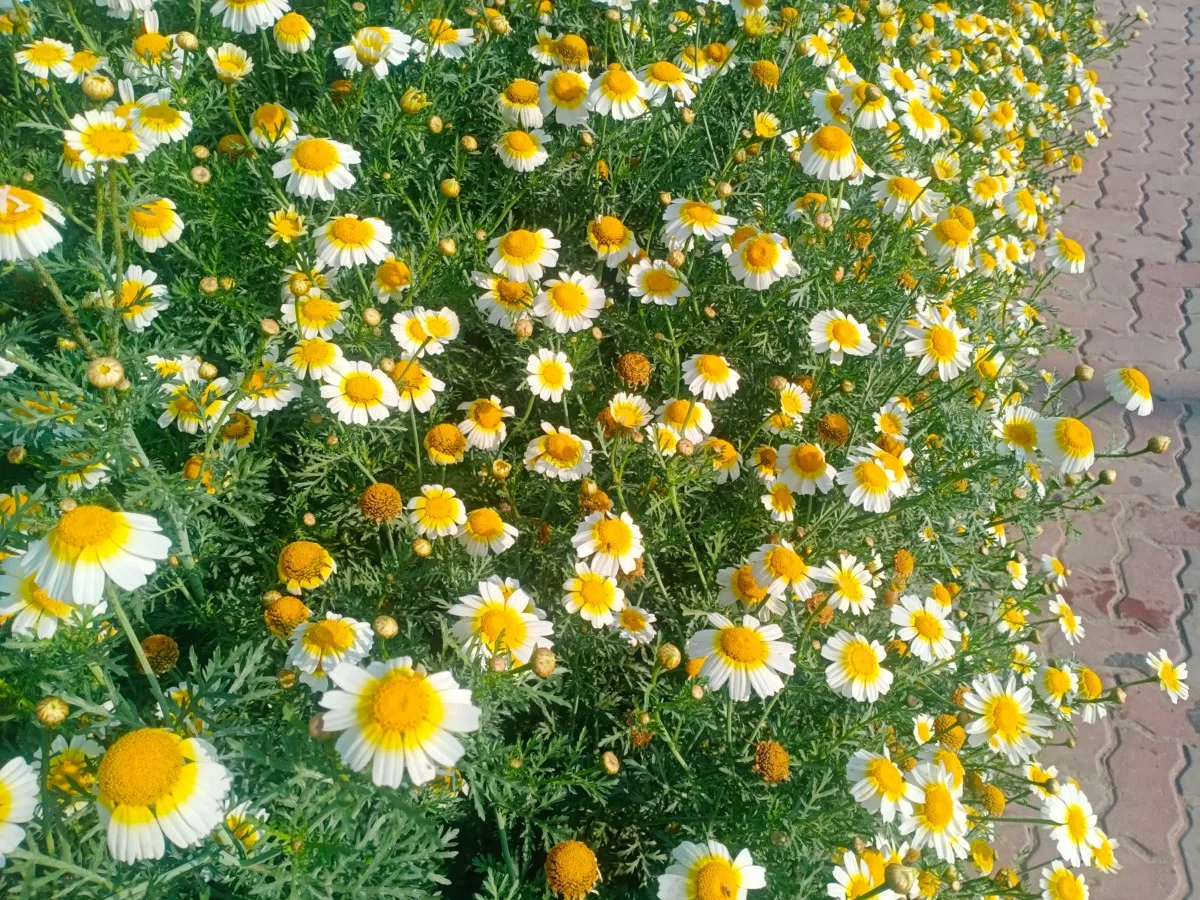
German chamomile is the more popular option for growing chamomile, and it’s easy to see why. It puts out an abundance of bright, white apple-scented flowers, and they can be used in a myriad of ways.
You’re probably already familiar with the tea and its soothing capabilities. But chamomile can also help ease menstrual pain, and its anti-inflammatory and antifungal properties make it a great skincare ingredient.
Out in the garden, this highly-scented flower keeps all sorts of pests away, including moth caterpillars and even deer. If you need a little more inspiration, I’ve got 11 ways to use chamomile.
Sun, Soil, and Water:
Chamomile is incredibly easy to grow; it will happily self-seed itself each year if you leave a few of the flowers to fall where it grows. Chamomile isn’t too fussy about soil or water, but it doesn’t like intense heat, so if your summers are particularly hot, it will probably wilt when the temperatures soar. Hardiness zones: 4-9
6. Daffodils (Narcissus)
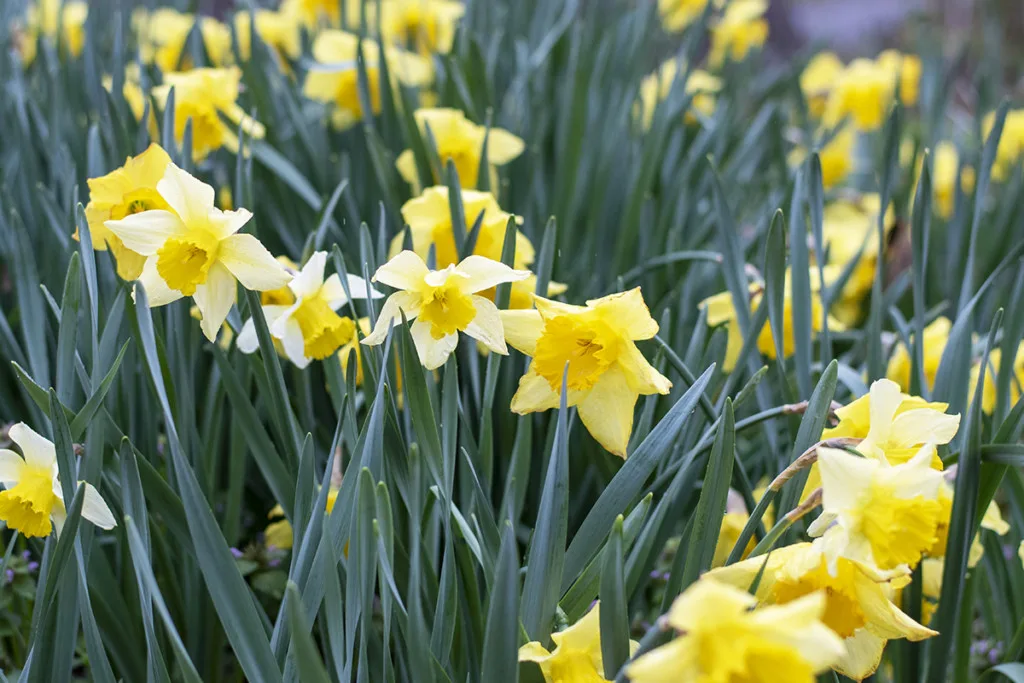
If you’ve got a problem with the taller four-legged pests getting into your garden, perhaps it’s time to get dirty and take care of business – with daffodils. Daffodils are poisonous to deer (and us too, so don’t go eating them), so deer avoid them. Consider adding these beautiful spring staples to the border of your vegetable patch to keep deer out. A hard line of defense never looked so pretty.
Sun, Soil, and Water:
Daffodil bulbs can be planted anywhere they have moist, well-draining soil. They do fine in many light conditions, from full sun to sun-dappled forest floor. And while they like moist soil, as they are a spring flower, you rarely have to worry about watering them yourself as mother nature tends to them quite well. Hardiness zones: 3-10.
7. Dandelion (Taraxacum)
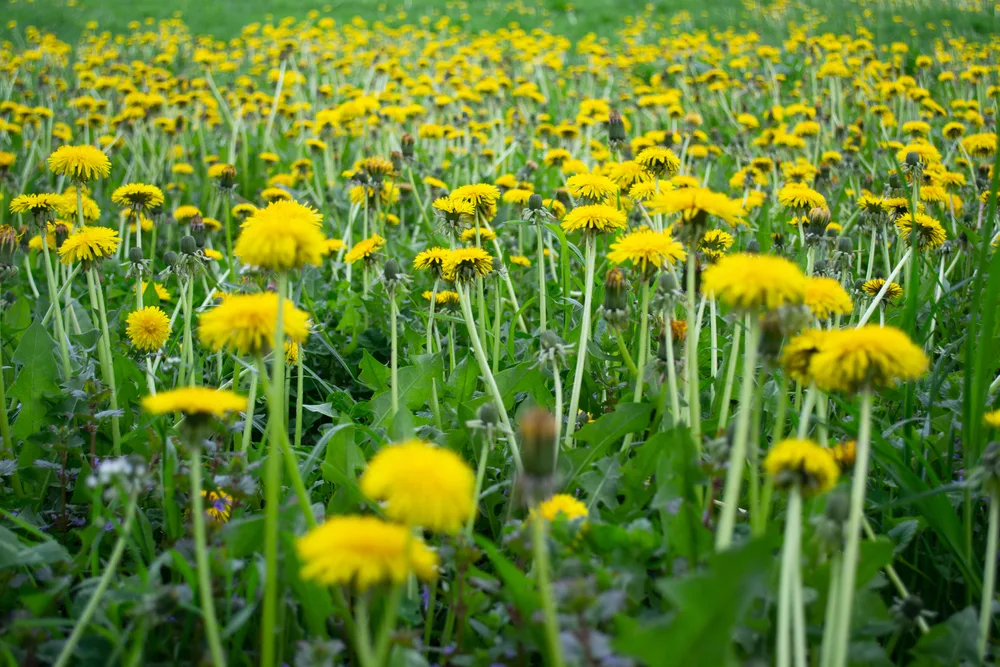
Now, wait, before you get cross with me because I’ve put a weed on this list that you can’t stop from growing everywhere in your yard, hear me out. Think of all the time, money and energy you’ve wasted trying to get rid of dandelions.
Wouldn’t it be easier to let bygones be bygones and embrace this easy-going, sunny friend?
I mean, come on, you have to admit it’s an incredibly friendly and cheerful yellow. And what’s more, it’s edible! Nearly all parts of the plant are edible and delicious, even good for you. Have you ever had dandelion greens on a pizza? So good! How about dandelion-infused oil?
Or how about roasted dandelion root coffee? You could make a batch of dandelion bitters to use as a digestive aid before a big meal or in your favorite cocktail. Let’s call a truce with this happy little flower; you’ve got better things to do with your time, like make a batch of delicious dandelion mead.
Sun, Soil, and Water:
Just stop fighting; they will show up. Hardiness zones: Do you live in Antarctica? No? Okay, you can grow dandelions.
8. Purple Coneflower (Echinacea)
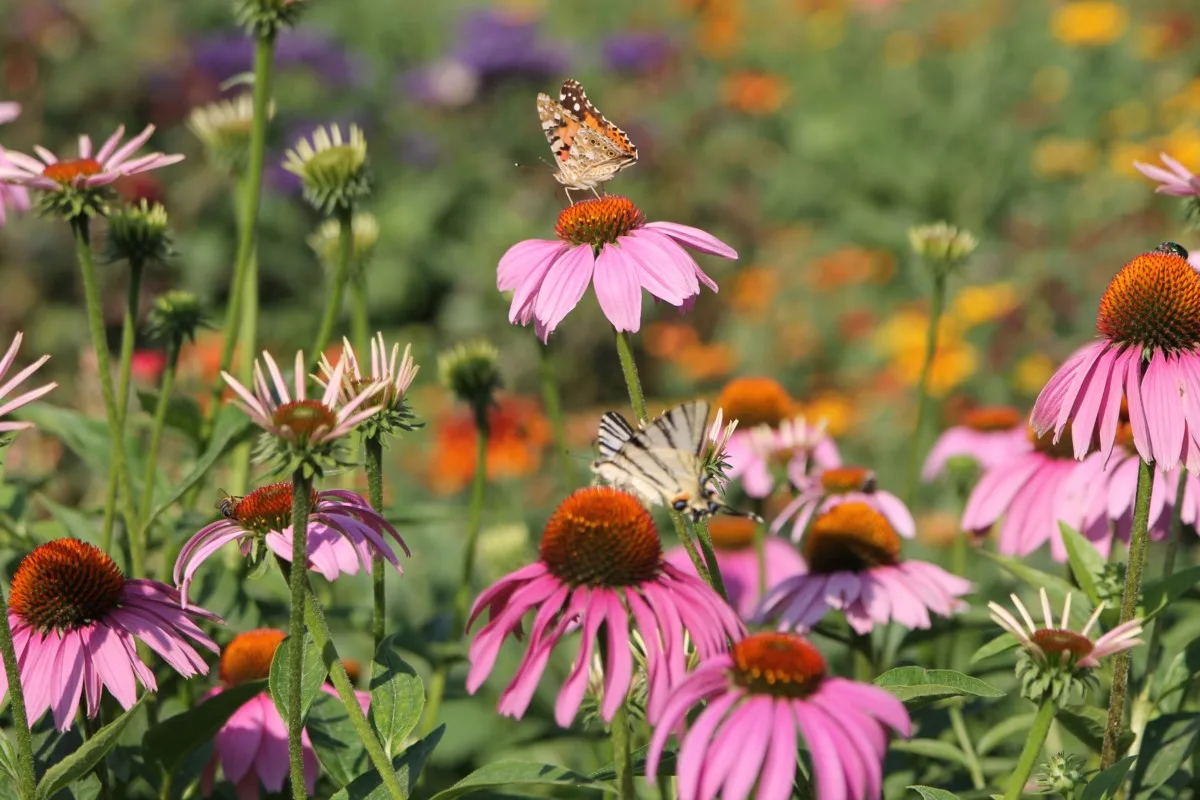
By now, most of us have heard that echinacea has immune-boosting powers and that alone is enough to want to grow it, but it’s also a great flower if you want to keep the deer out. Because of its prickly tops, the deer won’t touch it. So, if you’ve got deer munching on your flower bed, consider adding some coneflower.
If you’re an avid birder, leave the flower heads to go to seed, and the neighborhood finches will be happy to pick them clean.
Sun, Soil, and Water:
Coneflower needs bright, full-sun and well-draining soil. However, they are drought resistant and don’t need any watering from you beyond the first few weeks after planting them. Hardiness zones: 5-8.
9. Feverfew (Tanacetum parthenium)
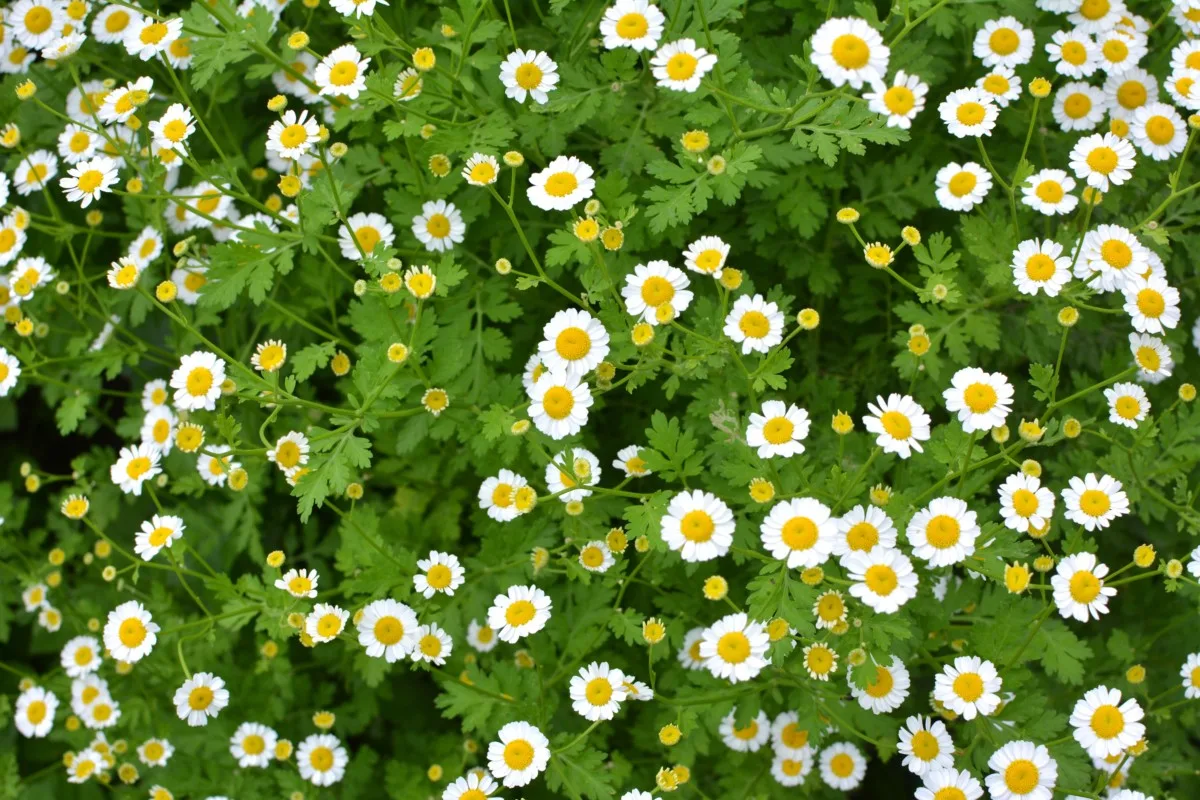
While technically feverfew is an herb, its nickname of ‘Medieval Aspirin’ should give you some hints about its usefulness beyond brightening up a corner of your lawn. These charming white flowers have been used for ages to treat everything from toothaches to arthritis to migraines. And it should go without saying, for treating fevers.
Sun, Soil, and Water:
Grow feverfew where it will receive bright full sun throughout the day. Plant it in well-draining soil and water to keep the soil slightly moist. Hardiness zones 5-9 when grown as an annual.
10. Geraniums (Pelargonium)
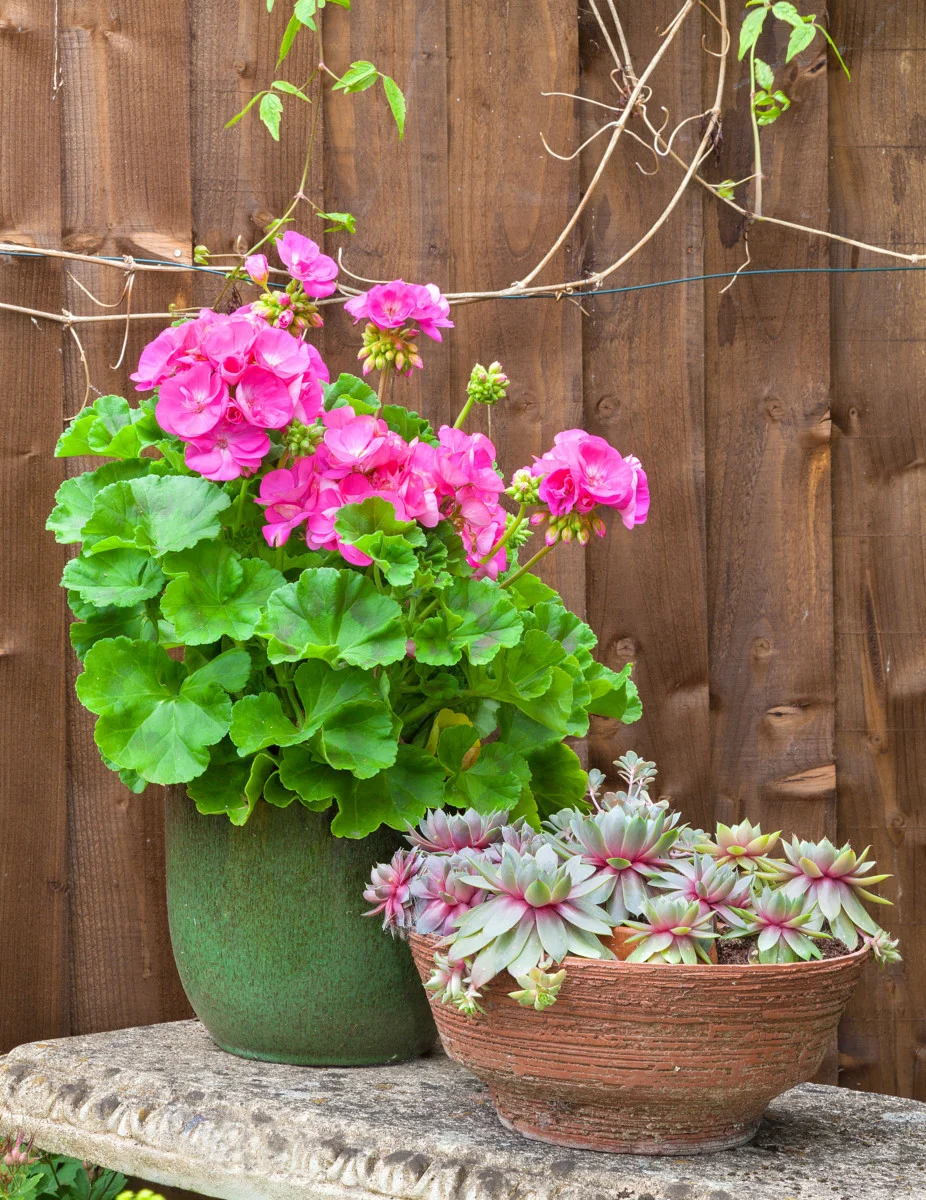
Geraniums are a perfect flower to plant on your patio. They have lovely green foliage, often with different shades of green or white on the leaves, and their brightly colored flowers pop against this green background.
But don’t let those pretty petals fool you. Geraniums will beautify your patio, but they will also help keep mosquitoes away naturally, with no smelly candles or chemical sprays. And in the garden, they make for an excellent trap crop.
Sun, Soil, and Water:
Geraniums need full sun to partial shade and rich, loamy soil. Keep the soil moist, and they will be happy. Hardiness zones: As a perennial in 10-11, but you can bring them indoors for the winter or plant them as annuals in zones 4-9.
11. Iris (Iridaceae)
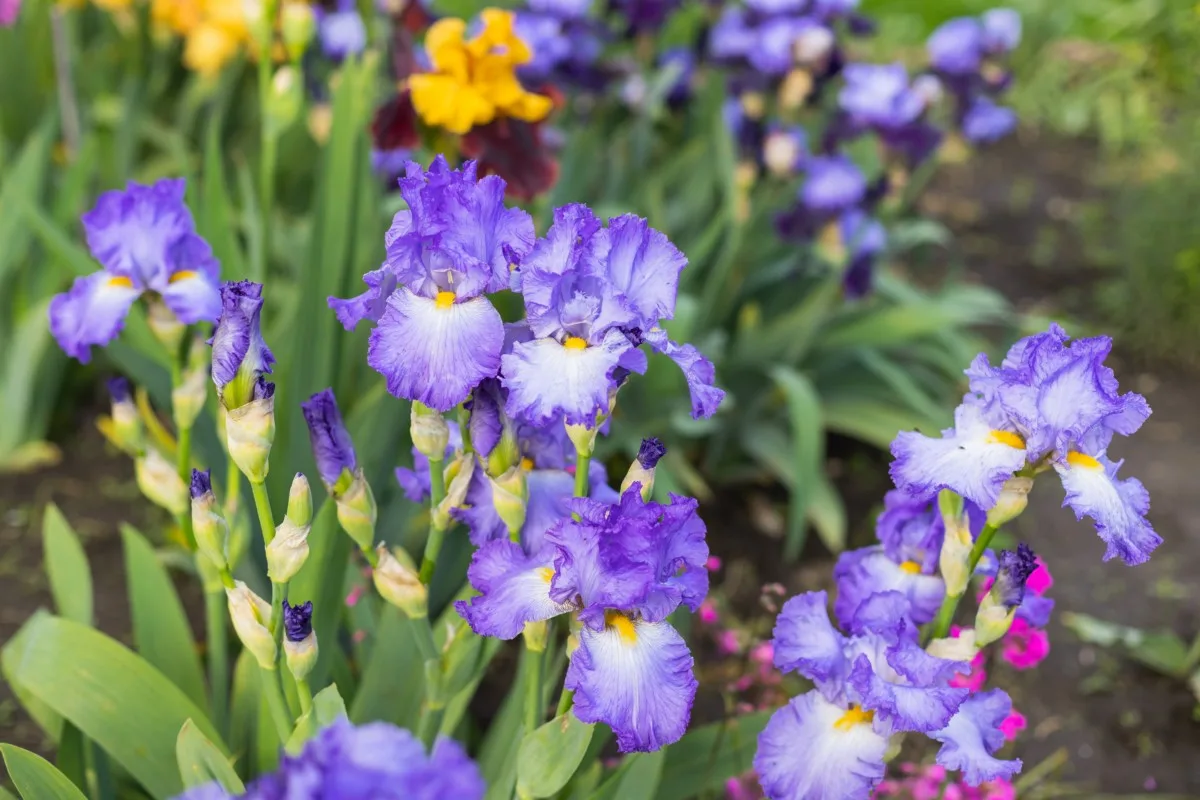
Irises are a personal favorite as they’re so elegant and stately. They also happen to be another flowering bulb that deer are hesitant to munch. Deer don’t like the way they taste, so they will leave them alone.
If you’re the creative type, you can make natural dyes and inks using both the iris flowers and the stems, both of which are quite stunning.
Sun, Soil, and Water:
Irises are prone to rhizome rot, so ensure their soil is never too wet and doesn’t cover the bulb completely. Irises can be grown in full sun to partial shade. Hardiness zone: 5 to 9
12. Lavender (Lavandula)
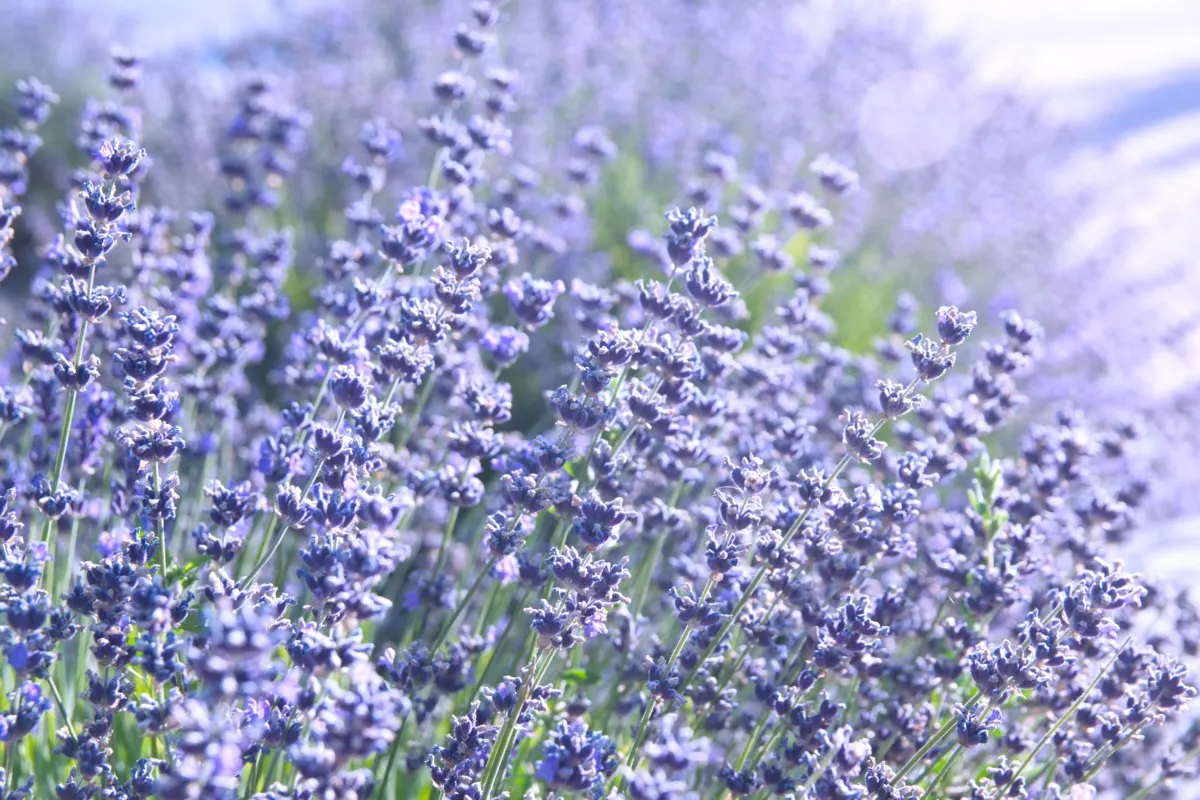
It should come as no surprise that lavender is on our list. I’ll bet you already have something lavender-scented in your home. Why not grow the real thing and use the flowers for sachets or sprinkling in drawers and closets. Your clothes will smell lovely, and you’ll keep moths away.
Of course, lavender also has a place in the kitchen with lavender tea, lavender cookies and even lavender ice cream. And doesn’t a lavender-scented bath sound lovely? Need more ideas? I’ve got 12 ways to use lavender around your home.
Sun, Soil, and Water:
Lavender needs bright, full sun to do best. Make sure you choose something that drains quickly for soil, as the roots can rot if left in moist soil. Water sparingly; they prefer to be quite dry and don’t do well in wet areas. Hardiness zones: 5-8
13. French Marigolds (Tagetes patula)
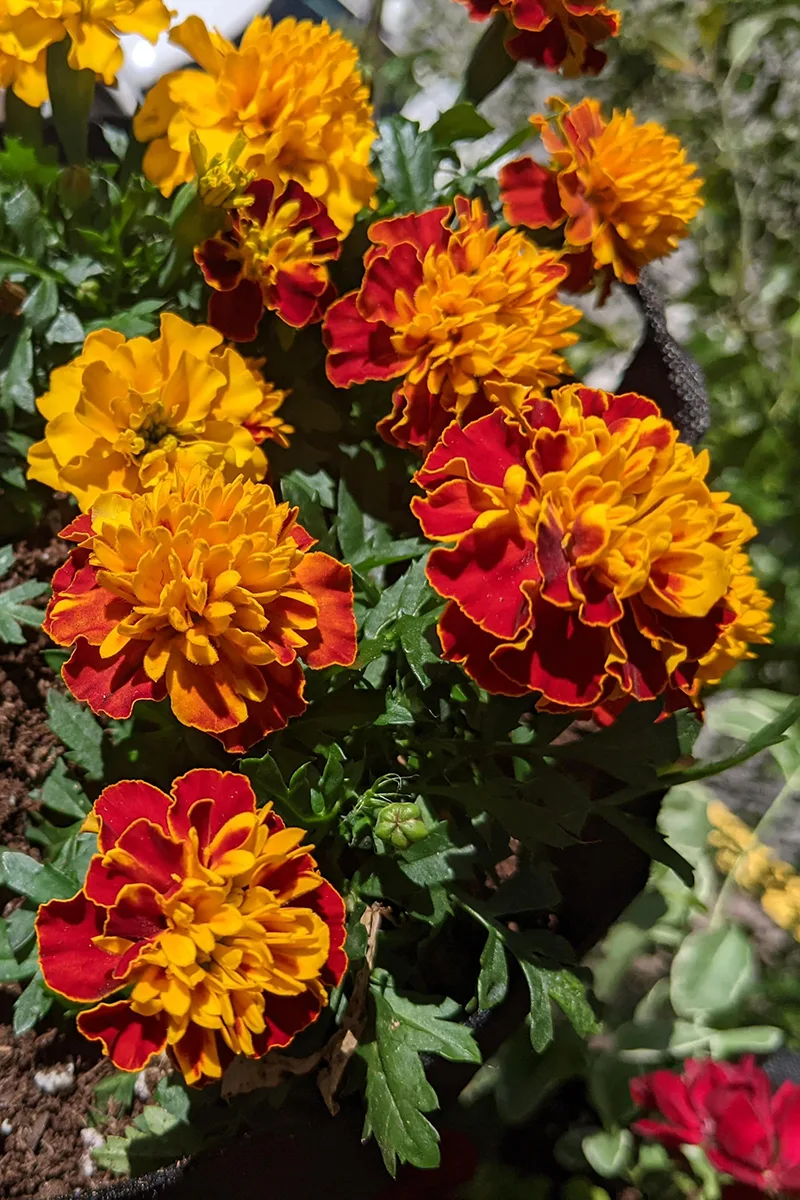
Meet your tomato’s new best friend, the common marigold. When it comes to companion planting, you would be hard-pressed to find a more useful flower than the French Marigold. These beautiful russet and orange flowers deserve a place in every vegetable garden for their ability to deter pests.
Aside from all of their hard work in your vegetable garden, don’t forget to invite them for dinner. You can eat the petals, tossing them in soups and salads for a bit of color. Marigold petals make an excellent natural yellow food coloring or dye too. I’ve even made marigold wine in the past that turned out excellent.
Sun, Soil, and Water:
Marigolds are so popular because they are easy to grow. Give them full sun and let them go. They don’t need anything special where the soil is concerned, and regular rainfall will keep these flowers happy. Hardiness zones: Grown as an annual in 2-11.
14. Nasturtiums (Tropaeolum)
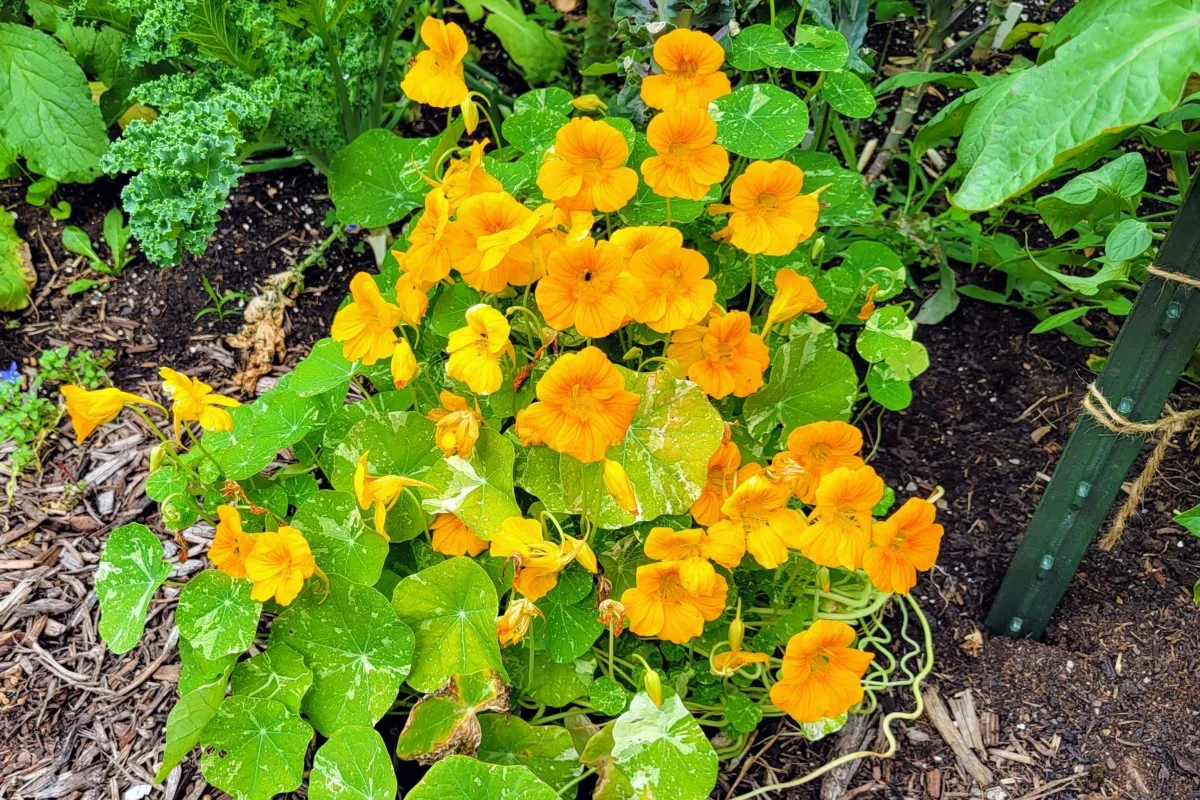
If there is one flower you plant in your vegetable patch this year, make sure it’s nasturtiums. Not only are these delicate-looking flowers beautiful, but they are dead useful. They are incredibly easy to grow, and they’re prolific, filling in with lovely green leaves and brightly colored flowers.
Nasturtiums are edible and tasty, too; their peppery leaves make a delicious addition to salads. Don’t forget to put a few flowers in there as well for a pop of color. There are plenty of ways to use the leaves and flowers of nasturtiums.
Nasturtiums are the ultimate trap crop flower, so be sure to plant them wherever you have issues with aphids or flea beetles.
Sun, Soil, and Water:
Nasturtiums do well in full sun; they aren’t particularly picky about soil; however, they need to be watered consistently to flourish. Hardiness zones: Perennial in zones 9-11, but can be grown as self-seeding annuals in zones 4-8.
15. Pansy (Viola tricolor)
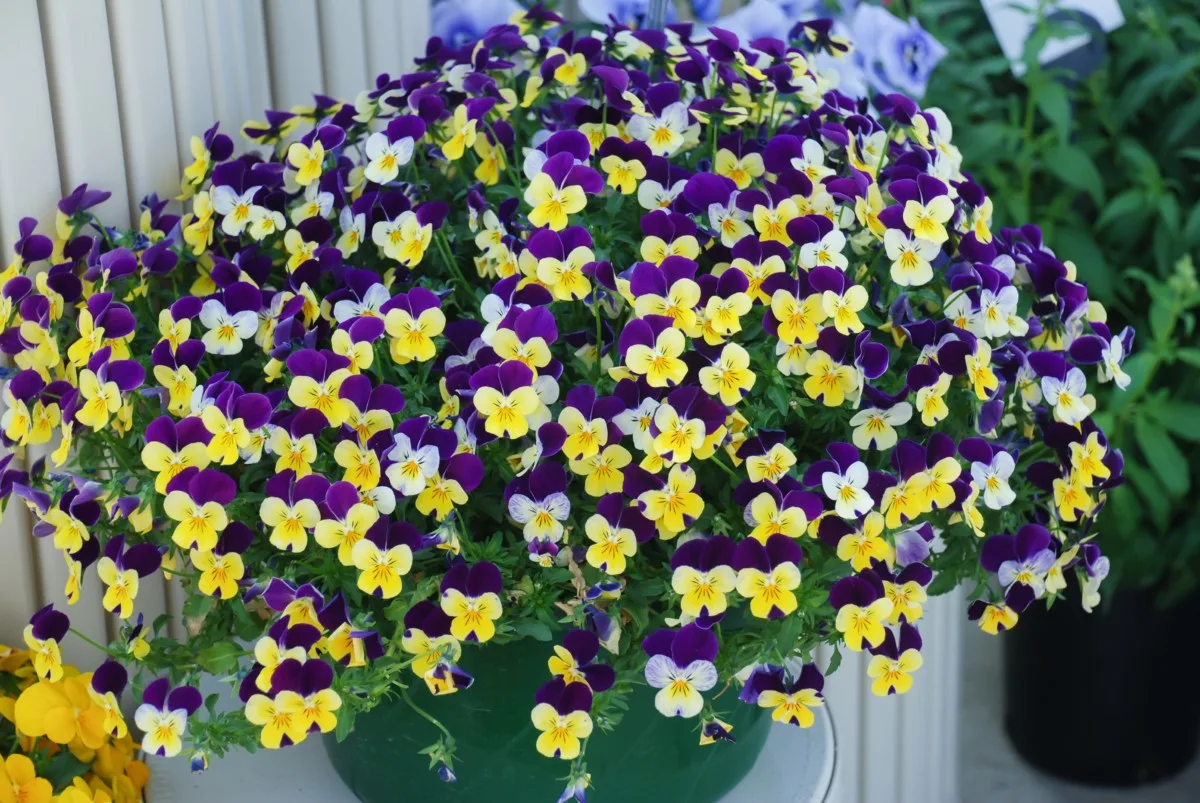
Okay, these will probably come home with you anyway simply because they are so charming, but pansies are a favorite edible flower and turn even the plainest of buttercream cupcakes into something special with a few candied pansies on top.
If you’ve got a dry cough and want to loosen things up a bit, make a cup of tea with some pansy flowers. Pansies contain mucilage which helps get things moving. Or consider making a facial toner using pansies as the flowers contain salicylic acid, which is well known for its benefits in treating acne.
How can you resist a flower with the nickname of Johnny-Jump-Up? I don’t think you should even try.
Sun, Soil, and Water:
Plant your pansies somewhere they will receive full sun in a rich and loamy, well-draining soil. Pansies don’t do well if they aren’t watered regularly. You want to keep their soil moist if you want happy plants with many blossoms. Hardiness zones: 6-11
16. Passion Flower (Passiflora)

The passion flower is always a show-stopping bloom, looking like it should be growing in some lush jungle instead of your backyard. And it’s a great, quick-growing vine that will happily fill in any gaps in your backyard fence, so you don’t have to look at your neighbor’s pink flamingo collection anymore. If you want shade over your pergola, plant a passion flower.
This exotic bloom is a great plant to fill in fencing; it’s also a highly edible plant. The passion flower produces small oblong fruit, a great snack in the summer with its sweet and sour flesh. The flowers are also edible, and teas and tinctures can be made from the leaves and roots to treat insomnia, headaches and depression. When you’re stressed out, this is the plant to have growing in your backyard.
Sun, Soil, and Water:
These tropical-looking flowers prefer indirect to full sun and will do best in rich, well-draining soil. Keep them moist, and they will thrive. Hardiness zones: 7-10.
17. Poppy (Papaveroideae)
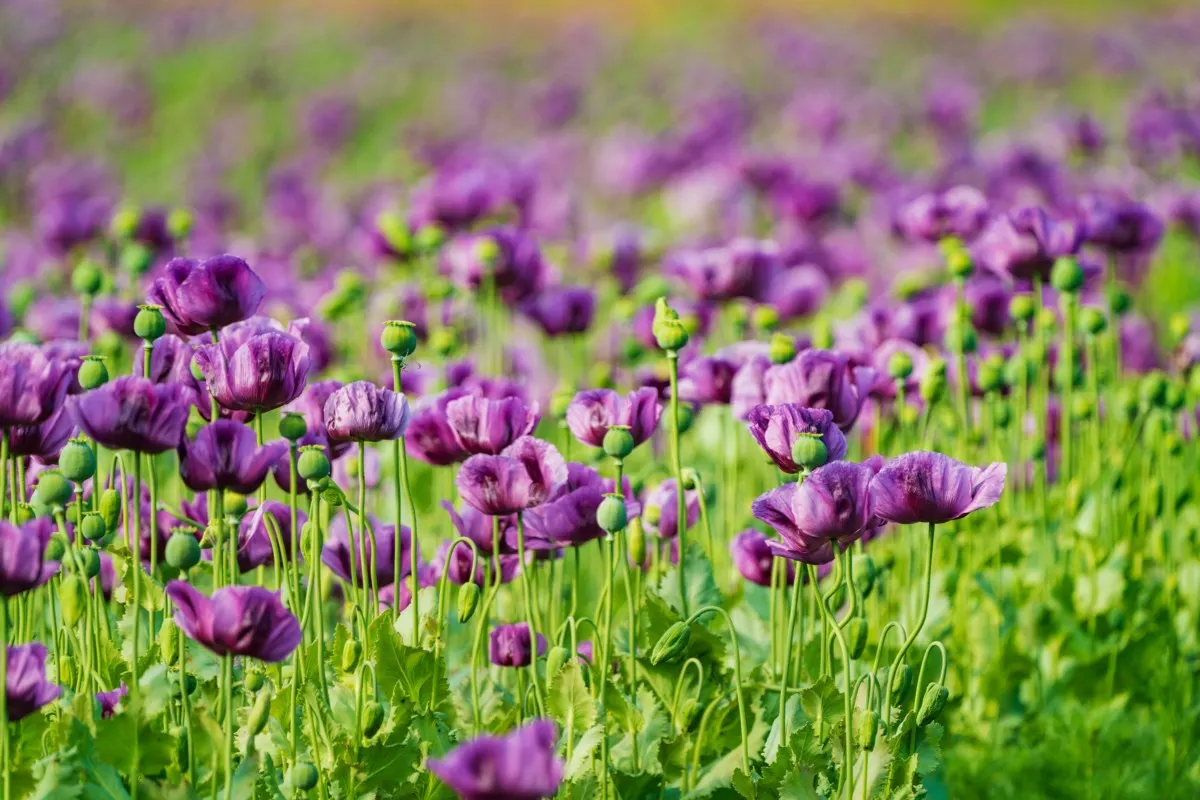
The paper-thin petals of poppies come in gorgeous colors, from bright orange to pale pink to silky black. The poppy has earned an unfair reputation due to its connection with opium and other narcotics. However, after reading Cheryl’s brilliant piece, I think you’ll find there are plenty of reasons to grow this beautiful flower. Whether harvesting your own tasty poppy seeds for lemon poppy seed cake or making your own poppy seed salad dressing, you’ll want to consider growing poppies.
Sun, Soil, and Water:
Poppies need full sun to partial shade and don’t tolerate dry or wet soil. Keep them in moist, well-draining soil, and they will do just fine. Hardiness zones 4-11.
18. Roses (Rosa)
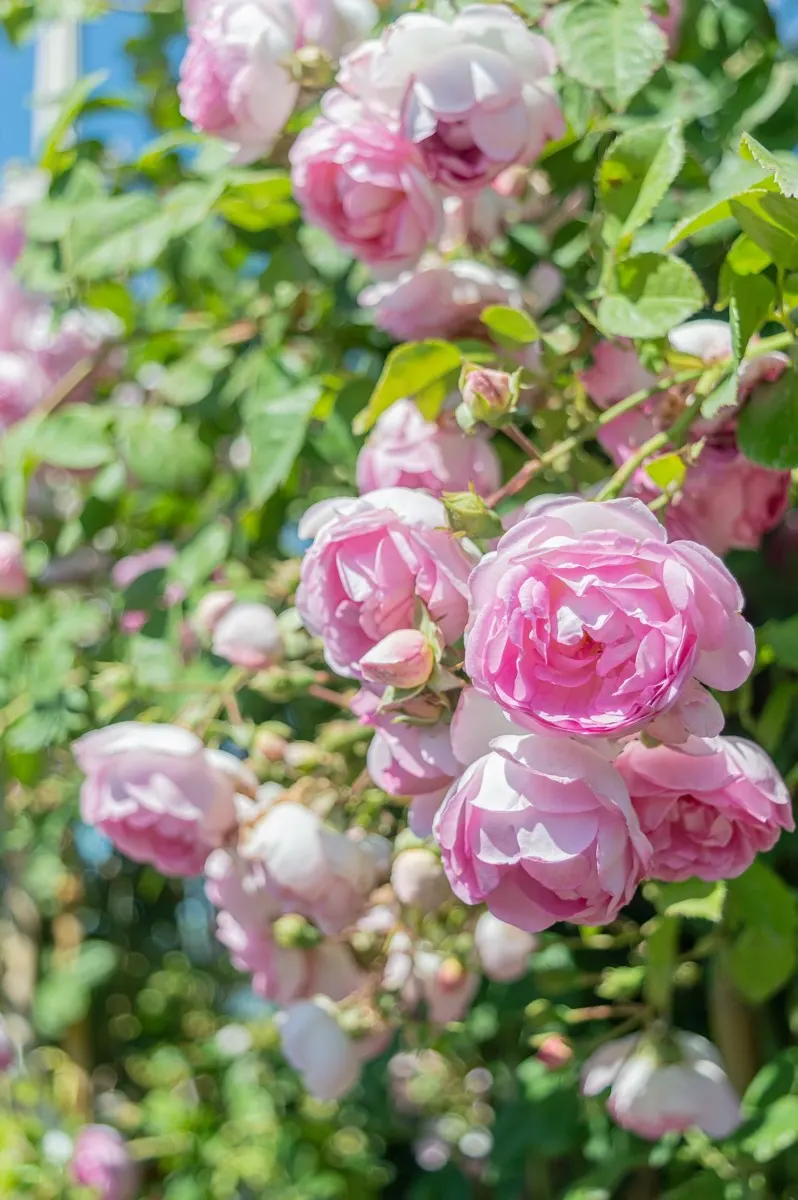
While roses are an investment of time and take considerable care, they offer more to your flowerbed than beautiful buds. Rose petals (provided you don’t spray your plants with chemicals) are edible and be dried and added to teas, potpourri or bath salts.
Of course, the rose hips are a bonus to growing roses. Harvest them after a frost or two, and they will be sweeter. You can make rose hip tea, rose hip honey, and several things from these vitamin C-packed berries. How about a delicious rose hip jelly from Larder Love?
Sun, Soil, and Water:
Roses require significant care, preferring full sun and moist but well-draining soil. They are also heavy feeders and will need to be fertilized throughout the growing season. Water them a couple of times a week and keep the area beneath the bush mulched to lock in moisture. Hardiness zones: Roses vary wildly in hardiness, so it’s best to check the particular variety you wish to grow to see if it will grow in your region.
19. Sunflowers (Helianthus)
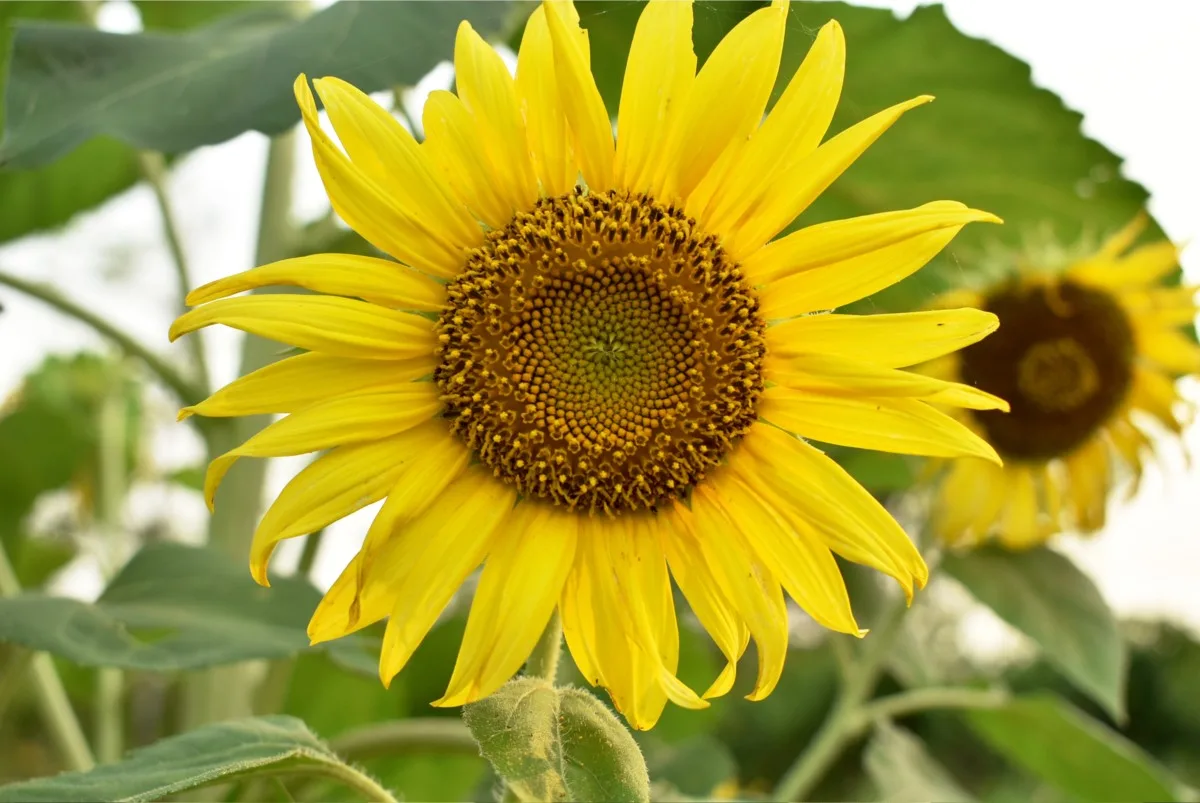
Sunflowers make a great addition to flower beds with their large, colorful heads. And it goes without saying that this flower is edible. Sunflower seeds make a great snack, and they are packed full of vitamins too.
This is another great flower to grow if you want to attract birds to your backyard.
Whether you want a smaller sunflower or a sunflower that grows taller than you, there are plenty of varieties to choose from.
Sun, Soil, and Water:
This annual flower needs full sun to do well. Water the seedlings when they first emerge, and they will happily grow without your assistance. Beyond that, they are scrappers and don’t need any special soil or fertilizer. Hardiness zones: 4-9.
20. Violets (Viola odorata)
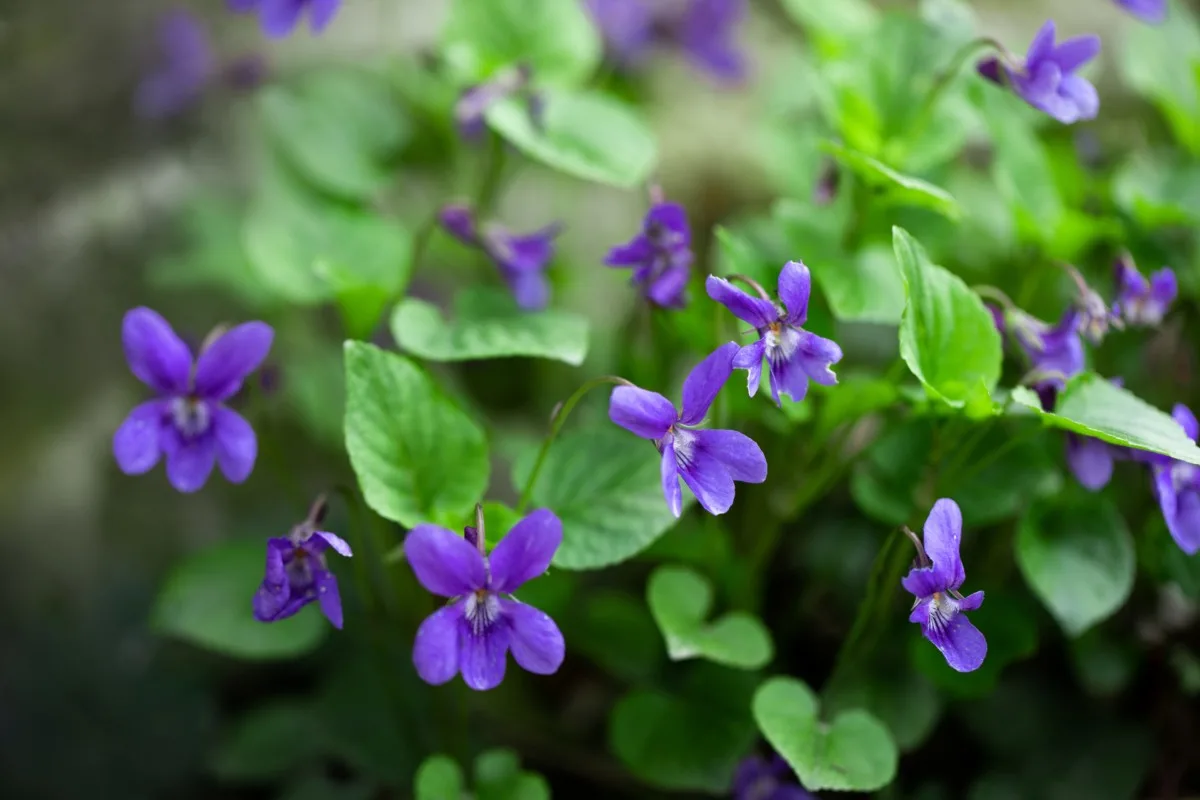
Sweet violets make such a beautiful addition to your lawn. They’re usually the first flowers to pop up in the spring, even beating out dandelions. Aside from enjoying a pretty carpet of purple and white blooms in your yard, you can eat these delicate flowers.
Try making some candied violets or tossing the dark, glossy leaves in a salad.
Whether you plant this cheerful spring flower on purpose or you already have a carpet of purple on your lawn, you’ll definitely want to make a batch of my violet syrup. The color is beyond stunning, and it’s always a great way to kick off the arrival of warm and sunny weather.
Sun, Soil, and Water:
Violets do best in moist soil and will happily grow out in the full sun of your front yard or the dappled shade of the woods. Hardiness zones: 4-9

Get the famous Rural Sprout newsletter delivered to your inbox.
Including Sunday ramblings from our editor, Tracey, as well as “What’s Up Wednesday” our roundup of what’s in season and new article updates and alerts.

